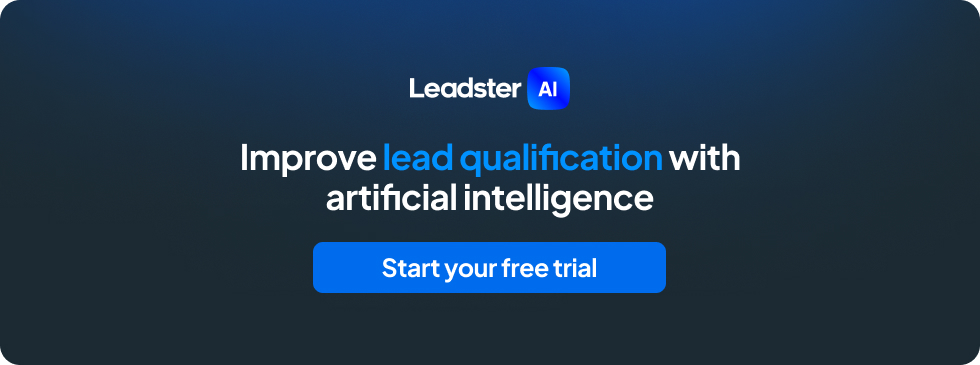How to Use AI – Examples by Market Segment
Do you know how to use Artificial Intelligence? Seems like almost everyone already knows. Or do they?
And even the “already knows” is not quite like that. Most people really know how to open ChatGPT, ask a few questions, get answers, etc.
But ChatGPT is not the only Artificial Intelligence tool in the market. There are already many, at different levels of complexity and with much more varied functions than what GPT can deliver.
And even the ChatGPT itself comes with some nuances and tricks that only those who use it daily know.
My job here is to do and know so that you don’t have to spend the same amount of time as me on this research and application.
That’s precisely the purpose of this article. Throughout the investigations of AI uses here on the blog, it became quite clear that each segment and size of a company makes different uses of it.
How do you know which one is ideal for you? Simple: by following along with me in the reading. Let’s get started?
What are the types of Artificial Intelligence available today?

This article will be divided into a few different stages. First, we need to talk about what types of Artificial Intelligence are available in the market today.
This is important because, as we’ve discussed so far, AI goes far beyond ChatGPT. You can already create images, videos, narrations, and even complete ads with just a few clicks and a powerful tool by your side.
Moreover, the importance also stands out here: with so many tools in the market, it can be challenging to choose the ideal one. Throughout the next items, I’ve also brought some recommendations of tools that we’ve already tested.
After this initial moment, we’ll delve deeper into the applications of these AIs, seeking the best usage practices according to your segment and the size of your business.
Let’s get started?
AI for Natural Language
The best AIs for creating text today are ChatGPT and Perplexity. But between these two, Perplexity is the better choice.
Mainly because Perplexity allows you to choose among the main Natural Language Processing models available.
GPT-4 is OpenAI’s model, but it’s not the only one, and new ones are being released every month. Working with a platform that allows you to choose the model you want is the best bet, as soon most will offer this choice as well.
GPT and co. can generate whatever you ask, from emails to entire videos. But it’s important to understand that AI is not a miracle worker. It will try, but editing is always a great idea. Human editing.
AI for creating video
There were already AIs for creating videos, but the work was done in a very rudimentary way, basically animating some frames, simulating natural movements of a presenter, etc.
But everything changes and very quickly. OpenAI’s new tool, Sora, can create photorealistic videos with just a few basic prompts.
This AI is still in development, so there aren’t many tools in the market that already offer the possibility of creating complete videos, especially for Digital Marketing.
Below is an example video of Sora in action. It’s almost scary:
AI Customer Support Assistant
Today there are already two main types of AI-powered chatbots for customer support: assistants and those that actually converse with the requester in real-time.
Assistants are more common. They were the first experiences with AI in this context. They can grasp the interlocutor’s intention and offer solutions to the human agent based on the company’s documentation.
For example: someone contacts the company’s chat and is greeted by a chatbot, which collects the request and puts the person in a waiting queue to speak with the agent.
When the agent starts talking to the requester, the chatbot offers solutions in the background for what the person is asking for, with relevant links and detailing the service processes.
In this example, the other type of AI-powered chatbot for customer support will try to resolve the request right away. It will only transfer the service to a human agent if it can’t handle the task.
And of course, there are also chatbots for WhatsApp, which operate in a simpler AI format and cannot formulate their own messages since they do not work with an NLP model.
Image generation AIs
Another very popular use of Artificial Intelligence is image creation. The most common platforms for this creation are DALL-E 2 and Midjourney.
Along with the AIs for creating text, these are the most popular in the market. There are already dozens of tools capable of creating ultra-realistic images with just a few prompts.
But it’s important to make the same distinction we made for text here as well.
DALL-E 2 and Midjourney are examples of AI models. If you go to their sites, you’ll be able to generate images normally there, but that’s not their main feature.
The interesting thing about these models is that they are licensed to other platforms. Thus, there are several more specific tools that use these models to deliver results more targeted to their purpose.
We explain this point better and bring several tool recommendations in our article on the topic. Check it out below:
➡️ 18 artificial intelligence tools for creating images
What are the uses of AI by business size

Well, now we’ve learned about the main uses of AI, right?
There are some other much more specific ones, like GitHub’s CoPilot that creates code, or narration platforms that help in video creation.
I didn’t include these two because the businesses we’re going to analyze here rarely need very extensive code, which would require the use of CoPilot.
These AIs that create narration tracks are quite simple and are found in the platforms that offer images, in many cases.
Anyway, knowing what the AIs are and their main types is just the first step. You’ll need to relate these uses to the reality of your business.
And that’s exactly what we’re going to talk about now. Let’s get practical!
Oh, and don’t forget to check out the topic after this one, where we’re going to talk about specific segments that can do very well with AI.
Let’s go:
AI for micro and small businesses
For these businesses, the use of AI mainly lies in creating text, images, and videos for advertising pieces.
Important note: I’m not saying that sole proprietors and microenterprises will only use AI for that, okay? There are companies and companies, each with a level of digital maturity and specific needs.
With this revenue, these companies often have great difficulties in making very extensive hires, such as setting up a marketing department.
So how do you use AI in this context? Simple: as if it were part of your department!
It’s very common for these companies to hire one or two professionals who use AI to complement the vacancies that the company couldn’t fill.
Some examples of how to use AI:
- Creating ads;
- Creating captions for social media;
- Creating images for social media and blogs;
- Creating topics for blog texts to generate leads;
- AI Chatbot for lead generation.
- AI for small and medium-sized businesses

AI for SMEs
SMEs have a much larger space to work with AI since they’ll have more resources to set up their marketing department.
This is a very important point: AI doesn’t come to cut costs. Its main use is to enhance the results you already have.
So, AI for these companies won’t work the same way as before, where they stopped hiring people to save money but still managed to run their marketing with their support.
Here, marketing is already running. AI can make it go further every time.
SMEs also have a good volume of customers who need support and service. In this case, AI support bots will significantly alleviate your department.
But it’s also important to understand some limitations of SME marketing departments, which, although they work well, still encounter some basic obstacles.
Investing in agencies, for example, is necessary but difficult in many cases. AIs can offer support in this area, working on content ideas and organizing those you already have.
Some suggestions for using AI as an SME:
- Creating scripts for videos;
- Creating videos themselves (production companies charge a lot!);
- Creating narration for videos;
- Content ideas;
- Reviewing and optimizing texts for SEO;
- Intelligent assistance with chatbots using AI;
- Creating editorial calendars;
- Creating slides for result presentations;
- Compiling Analytics to feed these presentations;
- Creating labels and packaging;
- Ideas for ad campaigns, among others.
Some of these actions will be similar to those in the next item, but that’s normal.
As companies’ size grows larger, we can more clearly see the main weaknesses of AI, which we need to remember is still a developing field.
But let’s continue:
AI for medium and large enterprises
Everything we’ve talked about so far also applies to medium and large enterprises.
In fact, it’s not even a matter of “applying.” All these uses we’ve seen so far are quite strategic for larger companies, which see in them the opportunity to grow their actions without needing to assemble gigantic marketing teams.
Here, the paradigm shifts a bit. The marketing teams of these companies were designed without AI in mind. Therefore, every time the actions became too much for the team, hiring someone was necessary.
What’s happening in the market now is a bit difficult to predict, but we’re noticing that content production has increased significantly after AI, with large companies leading this production.
So, all the other companies that still don’t use AI end up having a choice to make: work with it or hire more people?
And look: hiring would be a lot more people to compete with the competition that’s using AI.
Thinking about this, the main uses of AIs for medium and large companies are:
- Lead conversion with chatbots;
- Service with chatbots using AI and assistants;
- Compiling Analytics for simple and easy insights;
- Creating texts for institutional emails;
- Creating materials for internal marketing;
- Marketing action planning throughout the year;
- Budget control.
In addition to those we’ve already mentioned.
AI for the world’s best companies
The largest companies in the world also use AI, but they go a little beyond everything we’ve seen so far.
Of course, all the work done in the previous stage is also done here, but they go beyond, mainly in the Business Intelligence (BI) area.
These companies have been using BI software for some time, but now they come with an extra: an AI to convey results in a less technical and more proactive way.
Here’s how it works. Power BI operators, for example, need to know how to use Power BI to get the most out of it. And not everyone knows that.
In fact, not everyone even needs to use it. But the information it captures is of interest to the entire company in any case.
What AIs are initially doing is compiling the main data from the platforms and generating personalized and easily distributable insights. Via email, for example.
Another use gaining traction in the market giants is the use of AIs for navigating very extensive documentation.
Imagine, for example, that you started your first day of work at Salesforce today as a junior developer.
There’s an extensive documentation for each of their products, and if you have doubts about any functionality or string, you would have to search the entire documentation.
Generative AIs solve this. You can train it with your documentation and then ask simple questions that it can answer right away, turning a task that takes 1 hour into one that takes 1 minute.
What are the uses of AI by business segment

All good so far? We’ve talked a lot about the main uses of AI looking at business size, right?
Now we need to look more deeply at how these businesses operate.
Creating text with AI is different if you’re a marketing agency or an e-commerce. The nature is different, the prompts will also be different, the revising professional needs to have a specific background, and so on.
This variation in uses ends up leaving many people unsure of what exactly to do. The possibilities are so many, but so many, that we end up lost among them.
But now let’s solve this problem once and for all — or at least for the segments we’ve analyzed here. 😅
AI for agencies
Let’s start with controversy: should marketing agencies and digital service providers use AI for their clients or not?
The argument against is obvious: clients pay agencies for creativity and originality. If they were to use AI, the clients would do it themselves, right?
Well, the argument for tries to counter that: the agency’s work is not just the piece, it’s the strategy. If the strategy is working and AI is delivering well, why not use it?
That depends on the agency. But, in any case, the main uses of AI in agencies are related to content production.
With Artificial Intelligence, agencies can:
- Create editorial calendars;
- Create initial drafts of texts and captions;
- Create videos without paying high costs for filming or royalties;
- Create narrations to insert in simple campaigns;
- Create outlines for Lead Magnets;
- Create ads;
- Create report presentation;
- Send reports automatically already with text.
Among other more specific uses.
AI for service companies
Service companies need a website nowadays to generate leads and, above all, to have a significant increase in sales.
In this way, everything that can be done in marketing can be put to AI, in an experience similar to that of agencies.
Service companies can also count on AI Chatbots, both to generate leads and to serve customers.
AI for e-commerce
There are AI systems that have nothing to do with content, images, videos, etc. And they are quite useful in e-commerce.
The most popular of all is the smart storefronts. If you have it on your site, you can offer suggestions at checkout and offer related products with the customer’s last purchases directly on the homepage.
But Generative AI can also deliver great results here. You can use it to create product descriptions and even improve images.
In fact, you can test how this works now. Ahrefs provides a free tool for creating descriptive texts for e-commerce.
But there’s also another type of e-commerce, one that mainly operates on social media. Learn more:
AI for e-commerces on social media
Today, “just” having an e-commerce is very complicated. You’ll be competing with marketplaces, which are now aggregating so many merchants that it’s practically impossible to put your site at the top of Google search results pages.
Many e-commerce stores are using social media to showcase their products, like a real showcase or mini-site.
Those interested in the products then go to the site only to complete the purchase and learn about payment conditions.
How to use Artificial Intelligence in this case? Simple: putting the systems to work on social media too!
There are already simple chatbot systems that will respond to comments, make comments on other posts, search for people to follow, respond to DMs, etc.
This is not to mention the creation of content itself, which doesn’t have to be just text and photos anymore. You can create 100% original videos and even ask more advanced AIs to find memes to attract followers at the Top of the Funnel.
AI for brick and mortar retail
And physical retail, how to use Artificial Intelligence in a context that has nothing to do with digital marketing?
Well, first: nothing to do comma, right? Retail is physical. The store has an address. But their marketing strategies don’t need to be.
You can invest in ads and use AI to create images and copy, just like any other company in any other segment.
You can also use AIs to create store activations, reducing the load on designers and increasing profitability in actions.
Mass promotion sending for texts, WhatsApp and Telegram is also a great strategy, and with AI, anyone can write a simple message.
Those who sell their products can also use AI to create packaging, descriptions, and even help organize the catalog, in the case of sales in other stores.
AI for freelancers in digital marketing
We started with controversy and we’re going to end the text with controversy too: can freelancers use AI?
They can use it, but it’s the same case as with agencies. These professionals are hired for their originality and creativity. Using AI can be negative for them.
But it can also be used outside this context of delivery to the client. They are great allies, for example, for LinkedIn posts, articles on Medium, copy for the site, and even on the freelancer’s blog, if they have one.
And there you have it! We’ve gone through various use cases of Artificial Intelligence across different business sizes and segments. It’s a versatile tool that can be adapted to many different needs and contexts.
“I’m not sure if you noticed, but I didn’t include an exact guide on how to use AI here because nowadays there are AI systems of all kinds. And each type has different specifics.
What remains unchanged is that you create a prompt and get the results you need. It’s that simple.
You know what can also be very simple? Lead generation automation.
Using Leadster’s chatbot, you can create your own conversation flows with your website visitors, and convert them using conversational marketing.
Give it a try today. All you have to do is click on this link. Test it for 14 days – no credit card required!








